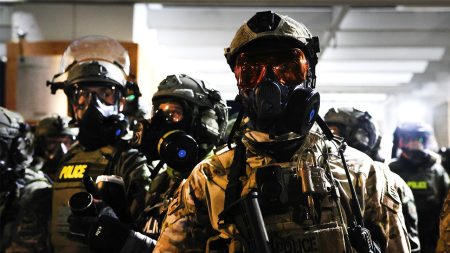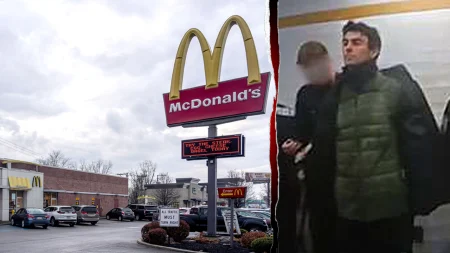In Gaza, Food Distributions Saving Lives While Costing Others
Humanitarian Efforts Expand Amid Deadly Challenges in War-Torn Enclave
The Gaza Humanitarian Foundation announced this week it has successfully delivered millions of meals to Palestinians trapped in the besieged territory, marking a critical lifeline for a population facing severe food insecurity. Yet these humanitarian victories have come at a devastating cost, with multiple Palestinians losing their lives while attempting to access these essential supplies—a stark illustration of the perilous conditions under which aid operations must function in the conflict zone.
“We’ve reached a bittersweet milestone,” said Dr. Fatima Abadi, operations director for the Foundation. “While we’re getting food to families who haven’t had a proper meal in weeks, the environment in which we’re operating remains incredibly dangerous for both recipients and aid workers.” According to the organization’s latest report, at least seventeen Palestinians have been killed in incidents related to food distribution since operations expanded in March, with dozens more injured in stampedes, military operations near distribution sites, or targeted attacks on aid convoys.
The humanitarian situation in Gaza has deteriorated dramatically since the conflict intensified last October, with the United Nations consistently warning of famine conditions in parts of the territory. International relief organizations estimate that nearly the entire population of 2.3 million Palestinians is now food insecure, with hundreds of thousands facing acute hunger. The Gaza Humanitarian Foundation, working alongside other international organizations, has established twenty-four distribution points across the territory, focusing particularly on northern Gaza where access has been most restricted by ongoing military operations.
Distribution Sites: Between Safety and Accessibility
Security remains the paramount challenge for humanitarian operations. Distribution sites must balance competing priorities: they need to be accessible to vulnerable populations but sufficiently removed from military targets to ensure civilian safety. Several deadly incidents have occurred when large crowds gathered at announced distribution points, creating situations that either sparked panic or, according to some humanitarian workers, attracted military attention.
“We change our distribution protocols weekly, sometimes daily,” explained Mohammed Saleh, a local coordinator who has worked with multiple aid organizations. “When word spreads about food being available, hundreds or even thousands can gather within minutes. Managing these crowds while ensuring equitable distribution has become as important as the food itself.” The Foundation has implemented a neighborhood-based rotation system, attempting to limit crowd sizes while still reaching all areas, but acknowledges that information often spreads beyond intended recipient groups.
International observers have documented multiple incidents where civilians queuing for food aid have been caught in crossfire or directly targeted. The most deadly incident occurred in late April, when an artillery strike hit a distribution area in Jabalia refugee camp, killing twenty-three people and injuring over sixty, according to medical sources. Military officials claimed the strike targeted militants who were attempting to divert aid supplies, while aid workers and survivors maintained it was a clearly marked humanitarian zone with no military presence.
Nutritional Needs and the Race Against Malnutrition
The meals delivered—primarily consisting of rice, flour, canned proteins, and high-calorie biscuits designed to combat malnutrition—represent only a fraction of the estimated 3,000 metric tons of food needed daily to adequately feed Gaza’s population. Pediatricians working in Gaza’s remaining functional hospitals report alarming increases in malnutrition cases, particularly among children under five, pregnant women, and the elderly.
Dr. Amal Hussein, a pediatrician at Al-Shifa Hospital’s remaining wing, described the medical consequences of the food shortage: “We’re seeing conditions we previously only read about in medical textbooks—kwashiorkor, marasmus, severe vitamin deficiencies causing night blindness and immune system failures. Children arrive with the distended bellies and thinning hair characteristic of protein malnutrition. Many won’t recover fully even if food becomes consistently available.” The Foundation has attempted to address these specific medical needs by including therapeutic feeding supplements in their deliveries, but supply limitations mean these specialized nutrition products often don’t reach those most in need.
Water contamination has compounded the nutritional crisis, with diarrheal diseases further compromising already malnourished individuals. The World Health Organization estimates that 70% of Gaza’s population now lacks reliable access to clean drinking water, making water purification tablets and oral rehydration solutions critical components of humanitarian deliveries. However, medical professionals report these supplies are frequently insufficient, with one hospital director describing the situation as “trying to empty the ocean with a teaspoon.”
The Logistics of Humanitarian Aid in a War Zone
The complex logistics of delivering aid into Gaza involve negotiations with multiple authorities, unpredictable border closures, and severely damaged transportation infrastructure. Aid convoys must pass through rigorous inspection processes that can delay deliveries by days or weeks, during which time perishable foods may spoil. Once inside Gaza, the destruction of major roads means deliveries often require multiple transfers between vehicles, with the final distribution sometimes completed using donkey carts or volunteers carrying supplies on foot through areas inaccessible to vehicles.
“The inspection process has become increasingly stringent,” noted Ibrahim Rahman, logistics coordinator for the Foundation. “Items that were permitted last week are rejected this week. We’ve had entire shipments turned back because they contained canned meat that suddenly required additional documentation.” These inconsistencies create planning challenges for humanitarian organizations and contribute to the unpredictable nature of aid availability for recipients, who often cannot know when or where the next distribution might occur.
Fuel shortages have further complicated distribution efforts, with generators powering refrigeration units for perishable foods frequently running out of diesel. Several warehouses have lost entire cold storage inventories during extended power outages, representing not only lost nutrition for recipients but also wasted donor resources in an already underfunded humanitarian response. The Foundation has attempted to mitigate these challenges by focusing on shelf-stable foods, but acknowledges this comes at the cost of dietary diversity and nutritional completeness.
Beyond Emergency Response: Seeking Sustainable Solutions
While emergency food distribution remains essential to preventing immediate starvation, humanitarian organizations acknowledge it cannot substitute for restoring Gaza’s food production and market systems. Prior to the current conflict, Gaza produced approximately 60% of its vegetable needs through intensive urban and peri-urban agriculture. Now, agricultural areas have been largely destroyed or rendered inaccessible, with farmers reporting inability to tend crops in areas near the borders or buffer zones.
“Food aid keeps people alive today, but we’re equally concerned about tomorrow,” said Jamila Othman, an agricultural engineer working with the Foundation’s sustainability team. “Gaza’s farmers have lost livestock, greenhouses, irrigation systems, and in many cases, the land itself has been rendered unusable by heavy machinery or contamination. Rebuilding food production capacity will take years, even after hostilities cease.” The Foundation has begun incorporating seed packets and basic agricultural tools in some distribution packages, hoping to encourage small-scale vegetable production in any available spaces, including rooftops and courtyards of damaged buildings.
The economic dimensions of food insecurity extend beyond physical access. With unemployment now estimated at over 80% and banking systems largely non-functional, most families lack purchasing power even when food is commercially available. Several market-based initiatives have attempted to address this through food voucher programs or cash transfers, but these efforts remain limited by security concerns and the collapse of many financial services.
International Responsibility and the Path Forward
The international community’s response to Gaza’s hunger crisis has drawn criticism from humanitarian experts who point to both funding shortfalls and insufficient diplomatic pressure to ensure humanitarian access. The Gaza Humanitarian Foundation reports operating at 40% of its planned capacity due to access restrictions and funding limitations, despite the escalating needs.
“What we’re witnessing is a man-made famine that could be resolved through political will,” stated former UN humanitarian coordinator Dr. Helena Christensen at a recent donor conference. “While we appreciate the generosity of those supporting humanitarian operations, food aid alone cannot solve a crisis rooted in conflict and blockade.” Multiple humanitarian organizations have called for sustained humanitarian corridors, protection of civilian infrastructure including food markets and bakeries, and restoration of commercial imports alongside aid deliveries.
For Gaza’s civilians, these high-level diplomatic discussions feel increasingly removed from their daily struggle to feed their families. Mahmoud Rahal, a father of four from Gaza City who recently queued for seven hours to receive a two-week food parcel, expressed the sentiment shared by many: “We don’t want to live on handouts. We want to work, to buy our own food, to feed our children with dignity. But now, we have no choice but to risk our lives for these packages because the alternative is watching our children starve.”
As the Gaza Humanitarian Foundation and similar organizations continue their vital work, they do so with the knowledge that their efforts, while saving countless lives, take place within a broader failure to protect civilian populations and uphold international humanitarian law. Until a political solution addresses the root causes of Gaza’s crisis, millions will remain dependent on aid deliveries that, while essential, can only partially address the profound humanitarian catastrophe unfolding in the enclave.








